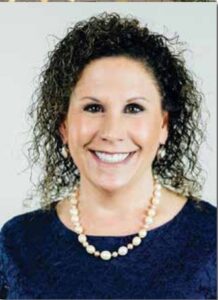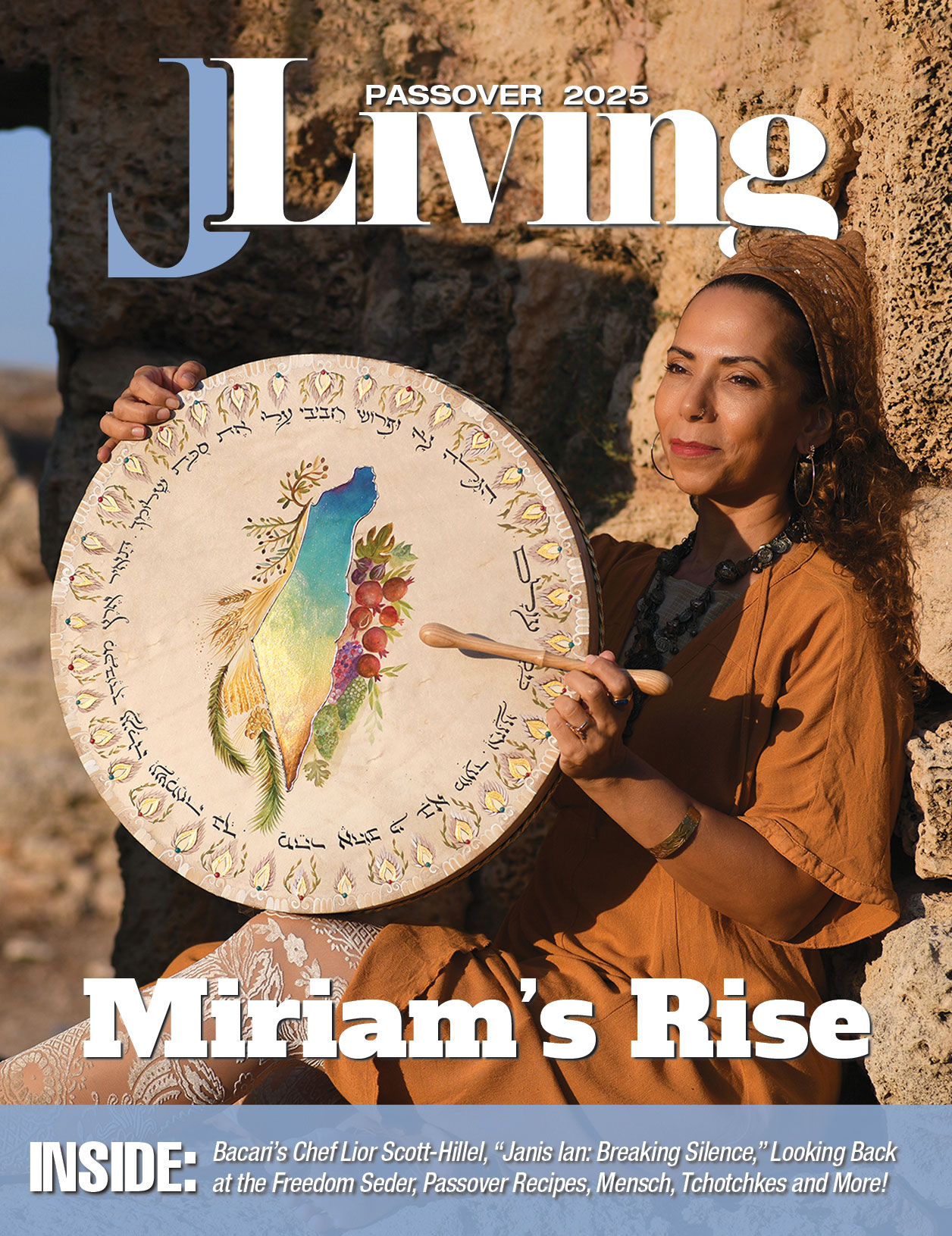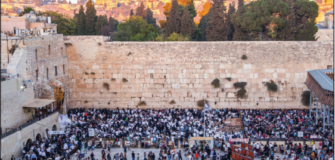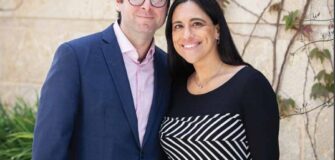Synagogues in Transition

The transition of leadership, whether in politics, business, or spirituality, can be a jarring affair for its constituents that bring out the best and worst in people.
“Change always is of concern to people. I don’t know if everyone acknowledges it. But that’s my view of the world,” Linda Camras said over the phone. As a long – time congregant of Sinai Temple, she speculated about the conflicted feelings of her fellow worshippers as Rabbi Wolpe, an internationally recognized spiritual leader, stepped down from the bimah. However, like much of the leadership at Sinai I spoke to, she echoed a familiar refrain about hope for the future and feeling blessed in the hands of Rabbis Nicole Guzik and Erez Sher – man.
The transition of leadership, whether in politics, business, or spirituality, can be a jarring affair for its constituents that bring out the best and worst in people. The ugly episode between Rabbi Gold – schmidt and Rabbi Schneier over the future of the prominent Park East Synagogue in 2021 marked an extreme example of such tran – sitional failure. Some congregants fled, accusations of criminal im – propriety were levied, and even an Israeli government minis – ter publicly opined. A schism formed in their community and Rabbi Goldschmidt founded a new synagogue in 2022.
In order to stop such acrimo – nious situations from festering synagogues need a robust conversation between clergy, lay leaders, and congregants to help make such transitions as seamless as pos – sible. To learn about how synagogues handle times of transition, I spoke with members of Sinai Temple, Valley Beth Shalom, and Wilshire Boulevard Temple.
For Rabbis Guzik and Sherman of Sinai Temple, the relationship between clergy and congregant is like a marriage, where direct and open communication are the most important tools. The analogy is apt for their approach as not only are they married themselves, but Rabbi Guzik also received her Master’s in Marriage and Family Ther – apy during the pandemic.
“I think it’s a matter of being as transparent as possible,” Rab – bi Guzik said over Zoom, “In any kind of change if the other party feels comfortable and safe, the more you’re able to commu – nicate.”
“Nicole’s been here over fifteen years and I’ve been here for ten years,” Rabbi Sherman said, jumping into the shared Zoom screen, “So we know the commu – nity and the community knows us. It was less about something new and more about continuing a legacy and tradition that Rabbi Wolpe brought into the 21st century in our unique way.”

Responding to my questions in a fast-paced husband-wife tag-team style, Rabbi Guzik leaped in on cue. She explained that from the outset of their journey towards senior leadership, they were upfront with community members in the backyard of their home, “We told them, ‘You will be hearing from us over the next three months about what it is we plan on doing and what goals we plan on achieving over the course of the year, and over the next three to five years.” Most importantly, she emphasized to their congregants that they wouldn’t keep their “Rabbinic vision” a surprise.

Sinai Temple, a conservative synagogue, has one of the most diverse congregations in terms of politics, age, and ethnicity. In response to my question about the push-back from various factions within their community, Camras said in a separate interview, “I was never the recipient of any negative pushback. But, you know, intellectually, I’m sure there are some people in the congregation that would have those feelings. It’s just the way things go everywhere, whether it’s in business or the Jewish community.”

For Wilshire Boulevard Temple, Rabbi Elissa Ben-Naim expressed that it is not necessarily about a singular leader instructing their flock, but a community and an experience.
“There’s nothing a leader can do if the parking or security is horrible,” Rabbi Ben-Naim said in an impromptu phone chat. Her feeling is that a spiritual leader in any congregation acts as a conduit for a “transcendental experience,” but there isn’t a sermon great enough to make members stay if the rest of their experience is abysmal. “It’s the people that you’re sitting in a classroom with or in community and in partnership, [who are most important],” she continued, “I think that at the Wilshire Boulevard Temple if a [leader] were to stand up and be completely opposite to the core values of the gathered individuals—even if they have an amazing personality—if they don’t speak a certain kind of truth and gather people in honesty, they’re not going to be successful. If a leader stands up and preaches the Bible of the pickles, it may be very beautiful, but if it doesn’t resonate with the people, he’s not going to get very far.”
Across these three historic Los Angeles synagogues, the major thread I continued to hear throughout the interviews is that the power lies with the people.
“I didn’t join a temple because of the rabbi,” Camras said, “And it’s always been my view that it’s up to the member—in any organization—to make sure that they are involved in whatever way that their needs are met. A lot of responsibility rests with the member.”

Anna Tenenblatt, Interim President at Sinai Temple, agreed over the phone, “There’s a phrase in the Torah, ‘Lo ba-shamayim hi.’ The Ten Commandments are not in Heaven. They’re down here with the people.”
Anna explained that in choosing a new rabbi for any congregation, there are times when communities go to the opposite extreme, “Prior to Rabbi Wolpe, we had someone else and there were issues. People didn’t like his sermons. They didn’t like this [or that]. He wasn’t Jewish enough. It was too secular. So then, people always put a list together. And it’s always the opposite kind of list.” However, Rabbi Wolpe’s leadership has brought great recognition to Sinai Temple and he continues to be a beloved figure to the congregation, so, to replace him, would be nearly impossible.
“It’s very difficult, you can’t replicate a leader, but everyone was familiar enough with Rabbis Guzik and Sherman to understand what they would bring to the table: they’re warm; they’re community building; their love of learning and of Judaism. They were known quantities.”
Rabbi Nolan Lebovitz, Senior Rabbi of Valley Beth Shalom, responded over email that the key to a successful transition is overlapping eras of leaders, “[VBS] offers a different model of transition than other congregations because Rabbi Feinstein has not stepped away. He has decided to step back to a certain extent. We work together. This model replicates the transition between Rabbi Schulweis and Rabbi Feinstein. He is an incredible sounding board for institutional history and for advice.”
Many of these conversations eventually found their way to reference Moses, who set an admirable example for leaders in transition. Rabbi Guzik spoke with excitement and pulpit pride when she related her experience to that of one of the Jewish people’s great patriarchs, “So much of the last year and a half, Erez and I have been thinking about Moses and Joshua. And the idea of Moses really lifting Joshua up as the leader that B’nai Israel needed at the moment. In fact, I remember when Rabbi Wolpe first introduced this idea of his retirement. It was very subtle, but he referenced Moses and Joshua. And that a great leader sets up the next great leader. That’s what leadership is.” Perhaps it was also her own subtle way of emphasizing Sinai Temple’s motto, emblazoned on the outside of their building, “L’dor V’dor,” which means from generation to generation.
Keeping to the philosophy that it is the community, the people themselves, who are the most essential, Rabbi Ben-Naim of Wilshire Boulevard Temple had her own take on Jewish leadership, “There are so many different leaders within the Jewish tradition, [the most quintessential] is Moses, who was appointed—chosen—because of his ability to leave space and room for the spiritual experience and not to have to rely entirely upon Moses as the leader. That equation of mentorship that the person that is involved in the spiritual experience is the biggest part of that equation. So it’s not Abraham. It’s not Sarah. It’s not Moses. It’s not Miriam. It’s not any one particular person.”
Echoing her sentiment, Rabbi Leibovitz wrote, “For me, being a leader of a congregation means enacting a spirit of Judaism that will appeal to our community moving forward. While our Torah remains our bedrock, great Rabbis have always been able to deliver its eternal wisdom to an ever-changing world. In some ways, the vision of the synagogue of tomorrow has to appeal to the world of tomorrow. In other ways, the synagogue must remain counter-cultural, holding fast to the eternal truths of our people. It’s my job to find the right balance between those two competing forces.”
It is clear that the rabbis see the people as the key to a successful transition and in maintaining the shared strands of the congregants as the ultimate decider.
Rabbi Guzik, in a bit of hope and warning, returned to her familial metaphor of clergy and congregant, “In any marriage, dreams can change and expectations can change. And often failed marriages exist when one couple or one partner decides to stop sharing or articulate their dream. And so really, it’s an invitation at the start of the marriage, to say, ‘we’re going to share our dreams and we want you to share yours.’”
Like much of Jewish history, there will no doubt be more changes, disruptions, and transitions that each of these communities must handle in togetherness. Camras asserted the unwavering ability of her fellow congregants to “weather any storm,” and come out better for it, whether it be the pandemic, fundraising, or a new rabbi.




























